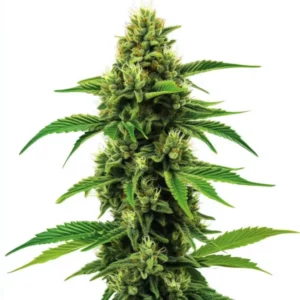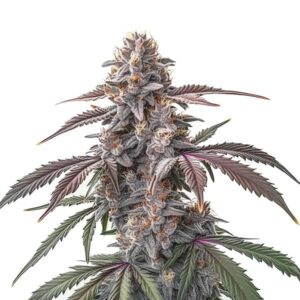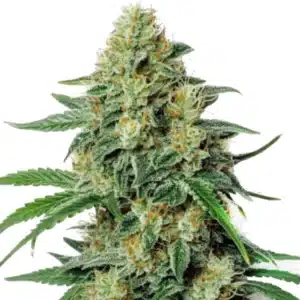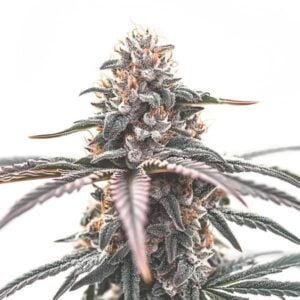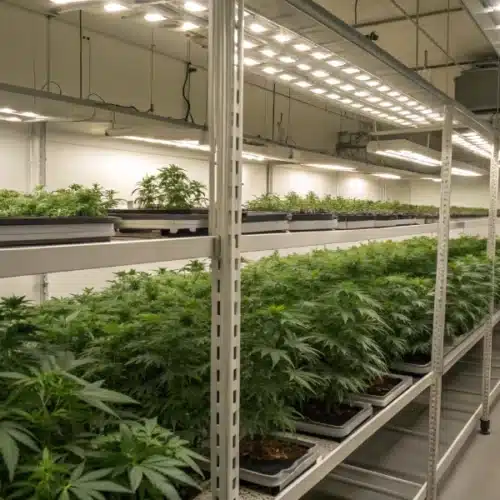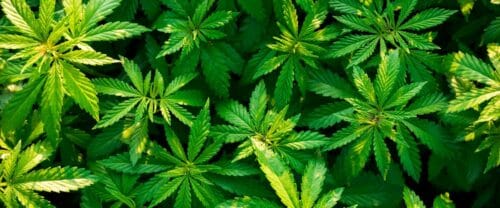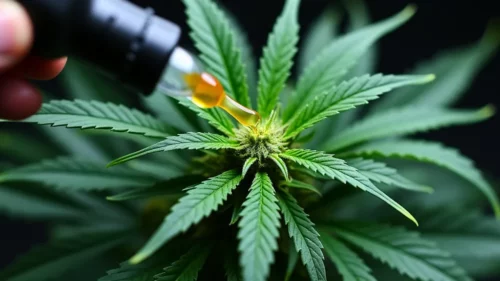Aphids can pose significant challenges during the late flowering stage of cannabis plants. These tiny pests may look harmless at first, but they actively suck the essential nutrients from your plants, causing a wide array of concerns for growers. While the presence of aphids may not seem alarming at first glance, their impact during this critical growth phase can be quite detrimental.
Understanding the behavior and management strategies for aphids is essential for any cannabis cultivator. Let’s delve into how to identify them, understand their risks, and explore effective management strategies to help ensure a successful harvest.
Identifying Aphids on Cannabis
Aphids are small, soft-bodied insects that can vary in color, typically ranging from green to black. Adult aphids are often found in clusters on the undersides of leaves or at the tips of new growth. Recognizing these pests promptly is crucial for effective and timely management.
By learning to identify these pests, growers can implement preventative measures or take action quickly if they spot an infestation. Regular monitoring will go a long way in maintaining the health of your plants during this sensitive growth phase.
Signs of Aphid Infestation
- Yellowing leaves, indicating nutrient depletion.
- Sticky residue on leaves, known as honeydew, produced by aphids.
- Presence of black sooty mold, which can develop on the honeydew.
- Stunted growth due to sap loss.
To effectively spot aphids, make it a habit to regularly inspect your plants, especially during the late flowering phase. The sooner you identify an infestation, the better your chances of mitigating damage before it escalates.
Sharing insights with fellow growers or seeking advice from local gardening clubs can also be beneficial, as collective experiences can often uncover early signs of aphid presence that might go unnoticed.
Promos & Deals
The Risks of Aphids in Late Flower
The late flowering stage is a pivotal time for cannabis plants, as they are preparing to produce their final yield. An uncontrolled aphid infestation can disrupt this delicate process, potentially leading to a reduction in both the quality and quantity of your buds. Understanding these risks can empower you to take preventive action.
Beyond the immediate threat to the plant’s growth, aphids can also introduce broader issues within your growing environment, such as attracting unwanted fungal pests that thrive in a weak plant ecosystem.
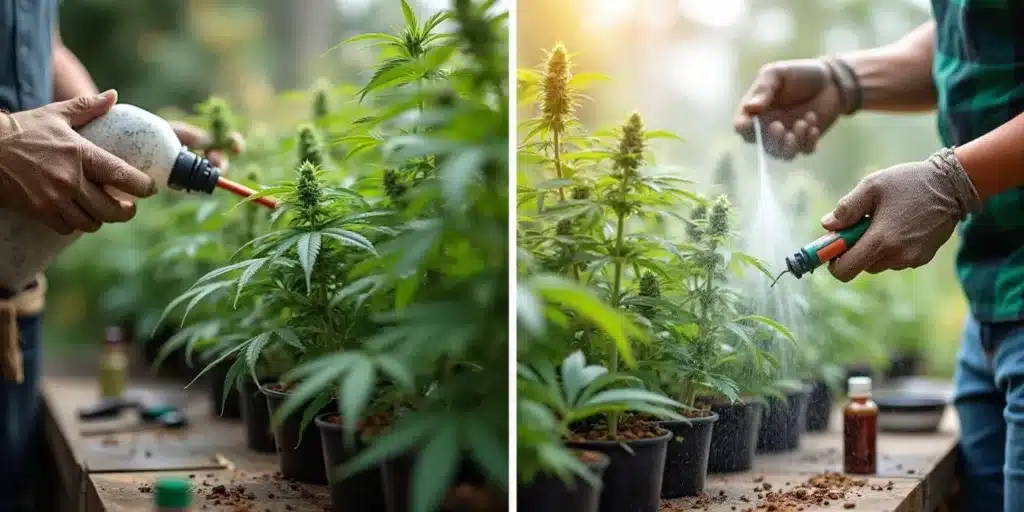
Potential Damage to Yield and Quality
- Sap Loss: Aphids feed on the sap, weakening the plant and leading to nutrient deficiencies that can impact overall growth.
- Spread of Diseases: Aphids are vectors for various plant viruses, which could significantly compromise the health of your plants and lead to further complications.
- Compromised Trichomes: The sticky honeydew can inhibit the development of trichomes, which are crucial for cannabinoids and terpenes, affecting the overall potency and flavor profile of the final product.
Healthier plants tend to produce bigger, denser buds with richer flavors. An aphid attack can reverse these desirable traits, leaving you with a less satisfying harvest. Considering this, your vigilance during the late flowering phase is paramount.
Furthermore, keeping your growing area clean and free from clutter can reduce potential hiding spots for aphids and other pests, making it easier to spot trouble before it ensnares your precious plants.
Effective Management Strategies
Combating aphids doesn’t have to be complicated. There are several practical strategies that can help protect your cannabis plants during the late flowering stage. Implementing these methods early on can save you time and stress down the line.
By being proactive and maintaining a comprehensive approach to plant care and monitoring, you can create an environment in which your plants can thrive despite the potential for pest intrusion.

Preventive Measures
- Regular Inspections: Check your plants frequently for early signs of infestation to catch issues before they escalate.
- Encourage Beneficial Insects: Ladybugs and lacewings are natural predators of aphids. Introducing them into your garden can effectively keep aphid numbers in check.
- Maintain Plant Health: Healthy plants are less susceptible to pests. Proper watering, along with nutrient supplementation, can create a strong defense against infestations.
By taking these preventive measures, you can save yourself a lot of time and effort in the long run. Look for signs of pest activity and make adjustments to your practices before problems become overwhelming.
Additionally, fostering natural biodiversity in your garden can contribute to a balanced ecosystem. This could include companion planting or creating habitats for flowering plants that attract pollinators and beneficial insects.
Controlling Aphids After Infestation
If you discover aphids despite your best efforts, don’t lose hope! There are several effective ways to control them without causing harm to your precious plants.
- Insecticidal Soaps: These products can be sprayed directly onto affected areas. They disrupt the aphids’ outer layer, leading to dehydration and eventual death.
- Neem Oil: A natural remedy, neem oil alters hormone levels in insects, preventing aphids from maturing into reproductive adults, thus reducing their population over time.
- Hose Them Off: Using a strong stream of water can dislodge many aphids from your plants. It’s a simple, chemical-free method that can be quite effective!
By implementing these strategies, you will not only minimize the damage done by aphids but also pave the way for your plants to recover and thrive.
Choosing Resistant Strains
If you’re looking to reduce the risk of aphid infestation from the start, consider selecting cannabis strains that are naturally more resistant to pests. Choosing these strains can lead to a healthier crop overall, reducing your stress and workload.
Moreover, research and community discussions can reveal which strains work best in your specific environment, providing valuable insights that can save you time and resources.
Recommended Strains
- Blueberry: Known for its aromatic profile and strong resilience against pests, this strain is a favorite among growers.
- White Widow: This robust hybrid is less attractive to certain pests, making it a solid choice for those aiming for lower maintenance.
- OG Kush: With its thick foliage, this strain serves as a natural barrier against many pests, making it a popular option.
Selecting the right strain can provide an added layer of protection against aphids and other pests, ultimately benefiting your late flowering process and ensuring a more fruitful harvest.
It’s also beneficial to experiment with different strains over multiple growing cycles, as you may discover new favorites based on how well they withstand various environmental factors and pest pressures!

Maintaining Plant Health
Ultimately, a healthy plant can better withstand various stressors, including pest pressures. Proper nutrition, watering routines, and maintaining the right environmental conditions are essential for fostering plant vitality.
Investing time in your plants’ basic needs lays a strong foundation for healthy growth, which is especially important as you approach critical phases like flowering.
Keys to Healthy Plants
- Balanced Nutrition: Ensure your plants receive a well-rounded diet appropriate for their growth stage, incorporating the right fertilizers and supplements.
- Proper Lighting: Adequate lighting not only promotes growth but also helps strengthen plants against pests, making them less vulnerable.
- Optimal Watering: Pay close attention to your watering schedule, as over or under-watering can weaken plants and make them more susceptible to pests.
By keeping your plants healthy, you empower them to fight off stress, including pest attacks. Paying careful attention to their individual needs can lead to a more robust outcome during late flowering, ultimately resulting in a more rewarding harvest.
Engaging with fellow growers online or in-person can provide fresh insights and tips on plant care that you might not have considered. Sharing knowledge fosters a supportive community focused on success!
FAQs
How can I tell if my cannabis plants have aphids?
Look for yellowing leaves, sticky substances like honeydew, and clustering pests on leaf undersides. Regular inspections are key to early detection, so don’t hesitate to get up close and personal with your plants!
Are aphids harmful to my cannabis plants?
Yes, they can drain vital nutrients from the plant, leading to stunted growth, poor yields, and the potential spread of diseases. Keeping a close eye can help you catch them before they cause significant harm.
What is the best way to prevent aphids?
Monitor your plants regularly, maintain their health through proper care, and consider introducing beneficial insects like ladybugs that can keep aphid populations low. A proactive approach is often the most effective!
Can I use chemical pesticides for aphids on cannabis?
While some chemical pesticides may be effective, it’s essential to ensure they are approved for use on cannabis, especially if the final product will be consumed. Opting for organic solutions is often a safer route!
How do I treat an existing aphid infestation?
You can use insecticidal soaps, neem oil, or simply wash them off using a strong stream of water. Always follow the product instructions carefully to avoid harming your plants. Transparency in treatment options is important for cannabis cultivators.

